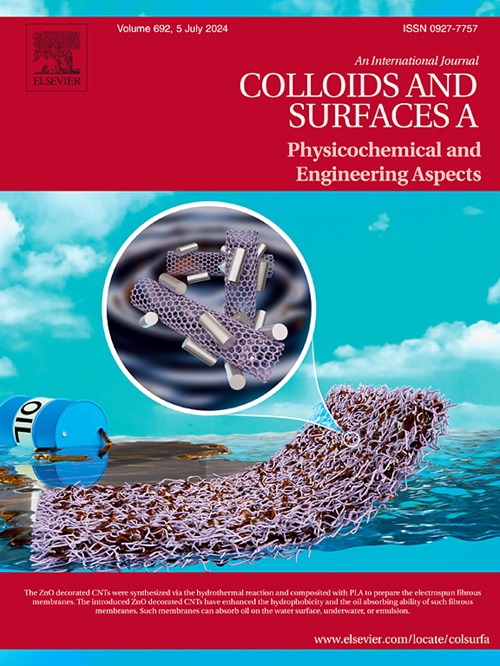Study on the tribological performance of nano-YSZ co-deposited Ni-Co composite coating via friction-assisted jet electrodeposition
IF 4.9
2区 化学
Q2 CHEMISTRY, PHYSICAL
Colloids and Surfaces A: Physicochemical and Engineering Aspects
Pub Date : 2025-04-01
DOI:10.1016/j.colsurfa.2025.136801
引用次数: 0
Abstract
Although jet electrodeposition allows for the deposition of composite coatings at higher current densities, achieving high-efficiency electrodeposition of nanocomposite coatings remains challenging due to edge effects caused by excessive current density and nanoparticle agglomeration during composite electrodeposition. This study explored friction-assisted jet electrodeposition of nanocomposite coatings, focusing particularly on the friction-assisted process at high current densities. The developed friction-assisted electrodeposition is expected to be applicable and beneficial for the electrodeposition of nanocomposite coatings. The micromorphology, microstructure, microhardness and wear resistance of the composite coatings were systematically evaluated, and the mechanism of friction-assisted jet electrodeposition of nanocomposite coatings was revealed. The results indicated that the friction assistance effectively disperses the nanoparticle agglomeration, obtaining a more uniform and smoother nanocomposite coating. Furthermore, the friction-assisted process does not change the microstructure of the coating growth, yet it significantly improves their microhardness and wear resistance, Notably, the performance of the friction-assisted jet electrodeposited Ni-Co/YSZ composite coating is the best at a particle concentration in the bath of 4 g·L−1. However, friction-assisted jet electrodeposition is still not suitable for the deposition of excessively high amounts of nanoparticles, mainly because the agglomeration of nanoparticles causes them to settle inside the electrolytic cell and cannot participate in the flow of the electrolyte for effective deposition. This work investigated the effect of friction assistance on the properties of nanocomposite coatings deposited by jet electrodeposition at high current densities. This study demonstrated that friction-assisted jet electrodeposition effectively enabled the deposition of nanocomposite coatings at high current densities, providing a new reference for achieving efficient, high-quality nanocomposite coatings through the brushing effect of insulating fibres on the cathode surface.
求助全文
约1分钟内获得全文
求助全文
来源期刊
CiteScore
8.70
自引率
9.60%
发文量
2421
审稿时长
56 days
期刊介绍:
Colloids and Surfaces A: Physicochemical and Engineering Aspects is an international journal devoted to the science underlying applications of colloids and interfacial phenomena.
The journal aims at publishing high quality research papers featuring new materials or new insights into the role of colloid and interface science in (for example) food, energy, minerals processing, pharmaceuticals or the environment.

 求助内容:
求助内容: 应助结果提醒方式:
应助结果提醒方式:


